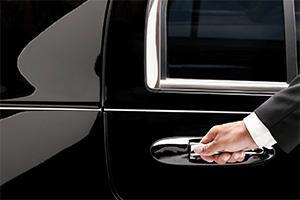Driver-owned or leased vehicles used for business
It’s a common enough scenario: an employee using their own vehicle or a vehicle the employee leased to run a quick trip to the store or business on company time might end up costing your business money as result of a vehicle crash. The end result: employee injury (possibly resulting in a workers’ comp claim), damage to vehicle(s) or property, general liability (GL) claims, negative company publicity, lawsuits, possible negligent entrustment, the list of difficulties goes on.
The use of a personal vehicle or leased vehicle for business purposes may in some states expose the company to liability claims as the result of an incident or collision involving others while on company business. (e.g., a trip to the post office, business visit, driving to or from a jobsite, or other errand). This is commonly known as the “non-owned” exposure.
Non-owned is defined by IRMI as “described in commercial auto policies as an auto that is used in connection with the named insured's business but that is not owned, leased, hired, rented, or borrowed by the named insured.”[1]
“Negligent entrustment claims arise when an unlicensed, incompetent, or reckless driver causes damages while driving a motor vehicle [regardless of ownership]. A party injured by such a driver must generally prove five components of this tort: (1) that the owner entrusted the vehicle to the driver; (2) that the driver was unlicensed, incompetent, or reckless; (3) that the owner knew or should have known that the driver was unlicensed, incompetent, or reckless; (4) that the driver was negligent in the operation of the vehicle; and (5) that the driver's negligence resulted in damages” (Amaya v. Potter, 94 S.W.3d 856 [Tex. App. 2002]).[2]
In order to help reduce your exposure, there are a few administrative controls that can help minimize risk:
- Make sure all drivers have a valid driver’s license
- Monitor motor vehicle registrations (MVRs) for all drivers (include all non-owned fleet employees in your existing MVR monitoring program)
- Always require employees who use a non-owned vehicle to provide a copy of a certificate of insurance (COI) that shows that an insurance policy is in force and active (in the event of an incident, this would be the primary coverage the business would typically be secondary).
- Include all non-owned fleet employees in your fleet safety program.
Periodic review of the driver owned/leased vehicle would also be encouraged to ensure that it is being properly maintained. Bottomline: all drivers involved with company business using personal/leased or company provided vehicle should be required to follow your fleet safety company policy. Qualifying driver(s) is important and helps prevent negligent entrustment issues as mentioned above. Those that don’t qualify or can’t meet your company fleet safety guidelines should not be allowed to drive for company business.
Key controls to consider:
- Approval to operate personal non-owned/leased vehicle on company business
- Have a valid driver license for the state operated in
- Include in MVR monitoring program and driver qualifications like those for company vehicle
- Provide copy of COI or declaration page with valid dates, policy limits (typically meeting your company limits), rated for business use on policy, and under/uninsured motorist limits.
- Follow company fleet safety policies
- Proper maintenance on vehicle
- Include driver safety training
- Review all incidents/collisions as part of your accident investigation process
- Share the information you learn from investigation with others within the company to help make your team better drivers in the long run.
For additional assistance, please reach out to your Hanover Risk Solutions consultant or agent.
References
1. International Risk Management Institute, Inc. (IRMI) https://www.irmi.com/term/insurance-definitions/nonownedautomobile#:~:text=Nonowned%20Automobile%20%E2%80%94%20described%20in%20commercial,borrowed%20by%20the%20named%20insured.
2. The Free Dictionary, https://legal-dictionary.thefreedictionary.com/Negligent+Entrustment.
Copyright © 2021 The Hanover Insurance Group
This material is provided for informational purposes only and does not provide any coverage or guarantee loss prevention. The examples in this material are provided as hypothetical and for illustration purposes only. The Hanover Insurance Company and its affiliates and subsidiaries (“The Hanover”) specifically disclaim any warranty or representation that acceptance of any recommendations contained herein will make any premises, or operation safe or in compliance with any law or regulation. By providing this information to you. The Hanover does not assume (and specifically disclaims) any duty, undertaking or responsibility to you. The decision to accept or implement any recommendation(s) or advice contained in this material must be made by you.
LC 2021-459
Related resources
Driver-owned or leased vehicles used for business
It’s a common enough scenario: an employee using their own vehicle or a vehicle the employee leased to run a quick trip to the store or business on company time might end up costing your business money as result of a vehicle crash. The end result: employee injury (possibly resulting in a workers’ comp claim), damage to vehicle(s) or property, general liability (GL) claims, negative company publicity, lawsuits, possible negligent entrustment, the list of difficulties goes on.
The use of a personal vehicle or leased vehicle for business purposes may in some states expose the company to liability claims as the result of an incident or collision involving others while on company business. (e.g., a trip to the post office, business visit, driving to or from a jobsite, or other errand). This is commonly known as the “non-owned” exposure.
Non-owned is defined by IRMI as “described in commercial auto policies as an auto that is used in connection with the named insured's business but that is not owned, leased, hired, rented, or borrowed by the named insured.”[1]
“Negligent entrustment claims arise when an unlicensed, incompetent, or reckless driver causes damages while driving a motor vehicle [regardless of ownership]. A party injured by such a driver must generally prove five components of this tort: (1) that the owner entrusted the vehicle to the driver; (2) that the driver was unlicensed, incompetent, or reckless; (3) that the owner knew or should have known that the driver was unlicensed, incompetent, or reckless; (4) that the driver was negligent in the operation of the vehicle; and (5) that the driver's negligence resulted in damages” (Amaya v. Potter, 94 S.W.3d 856 [Tex. App. 2002]).[2]
In order to help reduce your exposure, there are a few administrative controls that can help minimize risk:
- Make sure all drivers have a valid driver’s license
- Monitor motor vehicle registrations (MVRs) for all drivers (include all non-owned fleet employees in your existing MVR monitoring program)
- Always require employees who use a non-owned vehicle to provide a copy of a certificate of insurance (COI) that shows that an insurance policy is in force and active (in the event of an incident, this would be the primary coverage the business would typically be secondary).
- Include all non-owned fleet employees in your fleet safety program.
Periodic review of the driver owned/leased vehicle would also be encouraged to ensure that it is being properly maintained. Bottomline: all drivers involved with company business using personal/leased or company provided vehicle should be required to follow your fleet safety company policy. Qualifying driver(s) is important and helps prevent negligent entrustment issues as mentioned above. Those that don’t qualify or can’t meet your company fleet safety guidelines should not be allowed to drive for company business.
Key controls to consider:
- Approval to operate personal non-owned/leased vehicle on company business
- Have a valid driver license for the state operated in
- Include in MVR monitoring program and driver qualifications like those for company vehicle
- Provide copy of COI or declaration page with valid dates, policy limits (typically meeting your company limits), rated for business use on policy, and under/uninsured motorist limits.
- Follow company fleet safety policies
- Proper maintenance on vehicle
- Include driver safety training
- Review all incidents/collisions as part of your accident investigation process
- Share the information you learn from investigation with others within the company to help make your team better drivers in the long run.
For additional assistance, please reach out to your Hanover Risk Solutions consultant or agent.
References
1. International Risk Management Institute, Inc. (IRMI) https://www.irmi.com/term/insurance-definitions/nonownedautomobile#:~:text=Nonowned%20Automobile%20%E2%80%94%20described%20in%20commercial,borrowed%20by%20the%20named%20insured.
2. The Free Dictionary, https://legal-dictionary.thefreedictionary.com/Negligent+Entrustment.
Copyright © 2021 The Hanover Insurance Group
This material is provided for informational purposes only and does not provide any coverage or guarantee loss prevention. The examples in this material are provided as hypothetical and for illustration purposes only. The Hanover Insurance Company and its affiliates and subsidiaries (“The Hanover”) specifically disclaim any warranty or representation that acceptance of any recommendations contained herein will make any premises, or operation safe or in compliance with any law or regulation. By providing this information to you. The Hanover does not assume (and specifically disclaims) any duty, undertaking or responsibility to you. The decision to accept or implement any recommendation(s) or advice contained in this material must be made by you.
LC 2021-459
Related resources
Driver-owned or leased vehicles used for business
It’s a common enough scenario: an employee using their own vehicle or a vehicle the employee leased to run a quick trip to the store or business on company time might end up costing your business money as result of a vehicle crash. The end result: employee injury (possibly resulting in a workers’ comp claim), damage to vehicle(s) or property, general liability (GL) claims, negative company publicity, lawsuits, possible negligent entrustment, the list of difficulties goes on.
The use of a personal vehicle or leased vehicle for business purposes may in some states expose the company to liability claims as the result of an incident or collision involving others while on company business. (e.g., a trip to the post office, business visit, driving to or from a jobsite, or other errand). This is commonly known as the “non-owned” exposure.
Non-owned is defined by IRMI as “described in commercial auto policies as an auto that is used in connection with the named insured's business but that is not owned, leased, hired, rented, or borrowed by the named insured.”[1]
“Negligent entrustment claims arise when an unlicensed, incompetent, or reckless driver causes damages while driving a motor vehicle [regardless of ownership]. A party injured by such a driver must generally prove five components of this tort: (1) that the owner entrusted the vehicle to the driver; (2) that the driver was unlicensed, incompetent, or reckless; (3) that the owner knew or should have known that the driver was unlicensed, incompetent, or reckless; (4) that the driver was negligent in the operation of the vehicle; and (5) that the driver's negligence resulted in damages” (Amaya v. Potter, 94 S.W.3d 856 [Tex. App. 2002]).[2]
In order to help reduce your exposure, there are a few administrative controls that can help minimize risk:
- Make sure all drivers have a valid driver’s license
- Monitor motor vehicle registrations (MVRs) for all drivers (include all non-owned fleet employees in your existing MVR monitoring program)
- Always require employees who use a non-owned vehicle to provide a copy of a certificate of insurance (COI) that shows that an insurance policy is in force and active (in the event of an incident, this would be the primary coverage the business would typically be secondary).
- Include all non-owned fleet employees in your fleet safety program.
Periodic review of the driver owned/leased vehicle would also be encouraged to ensure that it is being properly maintained. Bottomline: all drivers involved with company business using personal/leased or company provided vehicle should be required to follow your fleet safety company policy. Qualifying driver(s) is important and helps prevent negligent entrustment issues as mentioned above. Those that don’t qualify or can’t meet your company fleet safety guidelines should not be allowed to drive for company business.
Key controls to consider:
- Approval to operate personal non-owned/leased vehicle on company business
- Have a valid driver license for the state operated in
- Include in MVR monitoring program and driver qualifications like those for company vehicle
- Provide copy of COI or declaration page with valid dates, policy limits (typically meeting your company limits), rated for business use on policy, and under/uninsured motorist limits.
- Follow company fleet safety policies
- Proper maintenance on vehicle
- Include driver safety training
- Review all incidents/collisions as part of your accident investigation process
- Share the information you learn from investigation with others within the company to help make your team better drivers in the long run.
For additional assistance, please reach out to your Hanover Risk Solutions consultant or agent.
References
1. International Risk Management Institute, Inc. (IRMI) https://www.irmi.com/term/insurance-definitions/nonownedautomobile#:~:text=Nonowned%20Automobile%20%E2%80%94%20described%20in%20commercial,borrowed%20by%20the%20named%20insured.
2. The Free Dictionary, https://legal-dictionary.thefreedictionary.com/Negligent+Entrustment.
Copyright © 2021 The Hanover Insurance Group
This material is provided for informational purposes only and does not provide any coverage or guarantee loss prevention. The examples in this material are provided as hypothetical and for illustration purposes only. The Hanover Insurance Company and its affiliates and subsidiaries (“The Hanover”) specifically disclaim any warranty or representation that acceptance of any recommendations contained herein will make any premises, or operation safe or in compliance with any law or regulation. By providing this information to you. The Hanover does not assume (and specifically disclaims) any duty, undertaking or responsibility to you. The decision to accept or implement any recommendation(s) or advice contained in this material must be made by you.
LC 2021-459
Related resources
Driver-owned or leased vehicles used for business
It’s a common enough scenario: an employee using their own vehicle or a vehicle the employee leased to run a quick trip to the store or business on company time might end up costing your business money as result of a vehicle crash. The end result: employee injury (possibly resulting in a workers’ comp claim), damage to vehicle(s) or property, general liability (GL) claims, negative company publicity, lawsuits, possible negligent entrustment, the list of difficulties goes on.
The use of a personal vehicle or leased vehicle for business purposes may in some states expose the company to liability claims as the result of an incident or collision involving others while on company business. (e.g., a trip to the post office, business visit, driving to or from a jobsite, or other errand). This is commonly known as the “non-owned” exposure.
Non-owned is defined by IRMI as “described in commercial auto policies as an auto that is used in connection with the named insured's business but that is not owned, leased, hired, rented, or borrowed by the named insured.”[1]
“Negligent entrustment claims arise when an unlicensed, incompetent, or reckless driver causes damages while driving a motor vehicle [regardless of ownership]. A party injured by such a driver must generally prove five components of this tort: (1) that the owner entrusted the vehicle to the driver; (2) that the driver was unlicensed, incompetent, or reckless; (3) that the owner knew or should have known that the driver was unlicensed, incompetent, or reckless; (4) that the driver was negligent in the operation of the vehicle; and (5) that the driver's negligence resulted in damages” (Amaya v. Potter, 94 S.W.3d 856 [Tex. App. 2002]).[2]
In order to help reduce your exposure, there are a few administrative controls that can help minimize risk:
- Make sure all drivers have a valid driver’s license
- Monitor motor vehicle registrations (MVRs) for all drivers (include all non-owned fleet employees in your existing MVR monitoring program)
- Always require employees who use a non-owned vehicle to provide a copy of a certificate of insurance (COI) that shows that an insurance policy is in force and active (in the event of an incident, this would be the primary coverage the business would typically be secondary).
- Include all non-owned fleet employees in your fleet safety program.
Periodic review of the driver owned/leased vehicle would also be encouraged to ensure that it is being properly maintained. Bottomline: all drivers involved with company business using personal/leased or company provided vehicle should be required to follow your fleet safety company policy. Qualifying driver(s) is important and helps prevent negligent entrustment issues as mentioned above. Those that don’t qualify or can’t meet your company fleet safety guidelines should not be allowed to drive for company business.
Key controls to consider:
- Approval to operate personal non-owned/leased vehicle on company business
- Have a valid driver license for the state operated in
- Include in MVR monitoring program and driver qualifications like those for company vehicle
- Provide copy of COI or declaration page with valid dates, policy limits (typically meeting your company limits), rated for business use on policy, and under/uninsured motorist limits.
- Follow company fleet safety policies
- Proper maintenance on vehicle
- Include driver safety training
- Review all incidents/collisions as part of your accident investigation process
- Share the information you learn from investigation with others within the company to help make your team better drivers in the long run.
For additional assistance, please reach out to your Hanover Risk Solutions consultant or agent.
References
1. International Risk Management Institute, Inc. (IRMI) https://www.irmi.com/term/insurance-definitions/nonownedautomobile#:~:text=Nonowned%20Automobile%20%E2%80%94%20described%20in%20commercial,borrowed%20by%20the%20named%20insured.
2. The Free Dictionary, https://legal-dictionary.thefreedictionary.com/Negligent+Entrustment.
Copyright © 2021 The Hanover Insurance Group
This material is provided for informational purposes only and does not provide any coverage or guarantee loss prevention. The examples in this material are provided as hypothetical and for illustration purposes only. The Hanover Insurance Company and its affiliates and subsidiaries (“The Hanover”) specifically disclaim any warranty or representation that acceptance of any recommendations contained herein will make any premises, or operation safe or in compliance with any law or regulation. By providing this information to you. The Hanover does not assume (and specifically disclaims) any duty, undertaking or responsibility to you. The decision to accept or implement any recommendation(s) or advice contained in this material must be made by you.
LC 2021-459





